|
|
|
F-104 Starfighter of the USAF |
|
The following units of the United States Air Force operated the Starfighter:
Tactical Air Command
479th Tactical Fighter Wing based at George AFB, California
434th Tactical Fighter Squadron
435th Tactical Fighter Squadron
436th Tactical Fighter Squadron
476th Tactical Fighter Squadron
Air Defense Command
56th Fighter-Interceptor Squadron based at Wright-Patterson AFB, Ohio
83d Fighter Interceptor Squadron based at Hamilton AFB, California
337th Fighter Interceptor Squadron based at Westover AFB, Massachusetts
538th Fighter-Interceptor Squadron based at Larson AFB, Washington
32d Air Division based at Homestead AFB, Florida
319th Fighter-Interceptor Squadron
331st Fighter-Interceptor Squadron
482d Fighter-Interceptor Squadron
Air National Guard
197th FIS , Arizona Air National Guard based at Tucson ANGB/Tucson International
Airport, Arizona
198th TFS , Puerto Rico Air National Guard based at Muniz ANGB/San Juan
International Airport, Puerto Rico
157th FIS, South Carolina Air National Guard based at McEntire ANGS
151st FIS, Tennessee Air National Guard based at McGhee Tyson ANGB
The Lockheed F-104 Starfighter is an American
single-engine, high-performance, supersonic interceptor aircraft that served
with the United States Air Force (USAF) from 1958 until 1969. One of the Century
Series of aircraft, it continued in service with Air National Guard units until
it was phased out in 1975. The National Aeronautics and Space Administration
(NASA) flew a small mixed fleet of F-104 types in supersonic flight tests and
spaceflight programs until they were retired in 1994
The F-104A initially served briefly with the USAF Air Defense Command /
Aerospace Defense Command (ADC) as an interceptor, although neither its range
nor armament were well-suited for that role. The first unit to become
operational with the F-104A was the 83rd Fighter Interceptor Squadron on 20
February 1958, at Hamilton AFB, California. After just three months of service,
the unit was grounded after a series of engine-related accidents. The aircraft
were then fitted with the J79-3B engine and another three ADC units equipped
with the F-104A. The USAF reduced their orders from 722 Starfighters to 155.
After only one year of service these aircraft were handed over to ADC-gained
units of the Air National Guard, although it should be noted that the F-104 was
intended as an interim solution while the ADC waited for delivery of the Convair
F-106 Delta Dart.
During the Berlin Crisis of 1961 President John F. Kennedy ordered 148,000
United States National Guard and reserve personnel to active duty on 30 August
1961, in response to Soviet moves to cut off allied access to Berlin. 21,067
individuals were from the Air National Guard (ANG), forming 18 fighter
squadrons, four reconnaissance squadrons, six transport squadrons, and a
tactical control group. On 1 November 1962, the USAF mobilized three more ANG
fighter interceptor squadrons. In late October and early November, eight of the
tactical fighter units flew to Europe with their 216 aircraft in operation
"Stair Step". Because of their short range, 60 F-104As were airlifted to Europe
in late November, among them the 151st FIS and 157th FIS. The crisis ended in
the summer of 1962 and the personnel returned to the United States.
USAF Tactical Air Command The subsequent F-104C entered service with Tactical Air
Command as a multi-role fighter and fighter-bomber. The 479th Tactical Fighter
Wing at George AFB, California, was the first unit to equip with the type in
September 1958. Although not an optimum platform for the theatre, the F-104 did
see limited service in the Vietnam War. Again, in 1967, these TAC aircraft were
transferred to the Air National Guard.
During the Vietnam War commencing with the Operation Rolling Thunder campaign,
the Starfighter was used both in the air-superiority role and in the air support
mission; although it saw little aerial combat and scored no air-to-air kills,
Starfighters were successful in deterring MiG interceptors. Starfighter
squadrons made two deployments to Vietnam, the first being from April 1965 to
November 1965, flying 2,937 combat sorties. During that first deployment, two
Starfighters were shot down by ground fire. One was shot down by a Chinese
MiG-19 (Shenyang J-6) when the F-104 strayed over the border, and two F-104s
were lost to a mid-air collision associated with that air-to-air battle. The
476th Tactical Fighter Squadron deployed to Vietnam in April 1965 through July
1965, losing one Starfighter; and the 436th Tactical Fighter Squadron deployed
to Vietnam in July 1965 through October 1965, losing four.
479th TFW F-104Cs at Da Nang, 1965.Starfighters returned to Vietnam when the
435th Tactical Fighter Squadron deployed from June 1966 until July 1967, in
which time they flew a further 2,269 combat sorties, for a total of 5,206
sorties. Nine more F-104s were lost: two F-104s to ground fire, three to
surface-to-air missiles, and the final four losses were operational. The
Starfighters rotated and/or transitioned to F-4 Phantoms in July 1967, having
lost a total of 14 F-104s to all causes in Vietnam.
The USAF was less than satisfied with the Starfighter and procured only 296
examples in single-seat and two-seat versions. At the time, USAF doctrine placed
little importance on air superiority (the fighter-to-fighter mission), and the
Starfighter was deemed inadequate for either the interceptor (meaning
fighter-to-bomber) or tactical fighter-bomber role, lacking both payload
capability and endurance compared to other USAF aircraft. Its U.S. service was
quickly wound down after 1965. The last F-104As in regular USAF service were re-engined
with more powerful and more reliable J79-GE-19 engines in 1967. The last USAF
Starfighters left active service in 1969. It continued in use with the Puerto
Rico Air National Guard until 1975.
The last use of the Starfighter in US markings was training German pilots for
the Luftwaffe, with a wing of TF-104Gs and F-104Gs based at Luke Air Force Base,
Arizona. Although operated in USAF markings, these aircraft (which included
German-built aircraft) were owned by Germany. They continued in use until 1983.
|
|
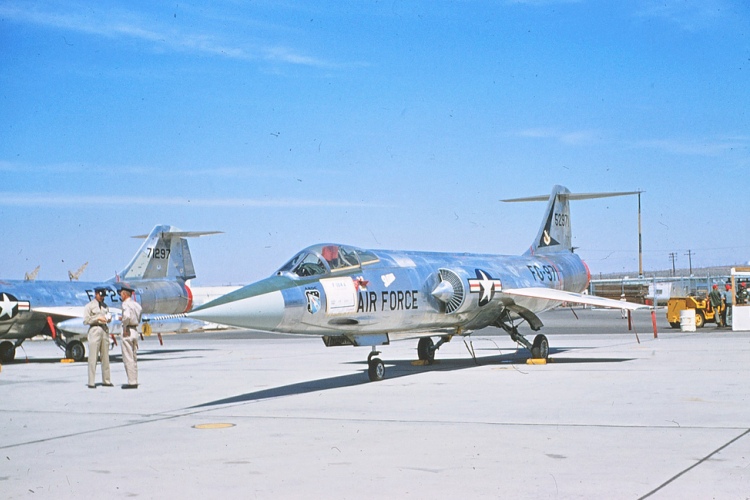 |
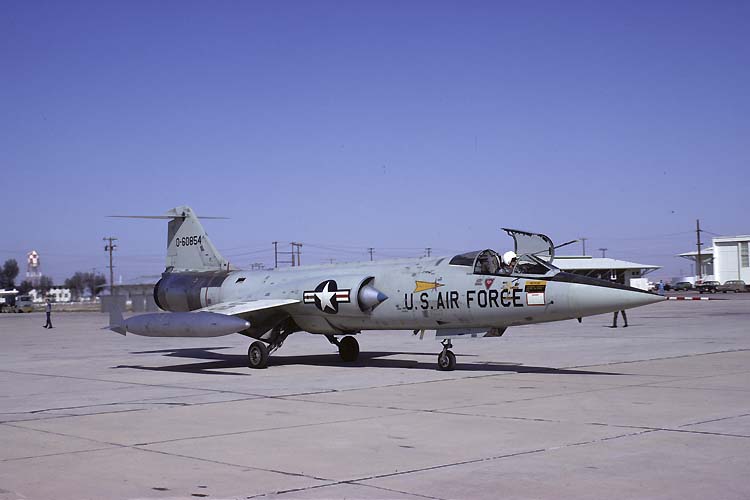 |
 |
|
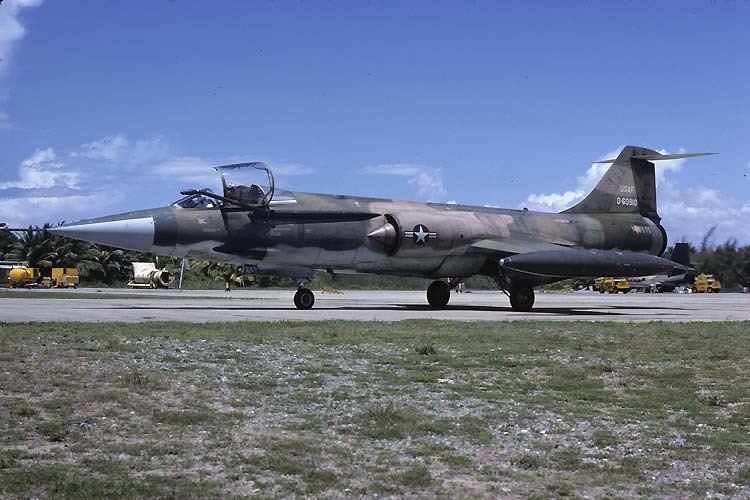 |
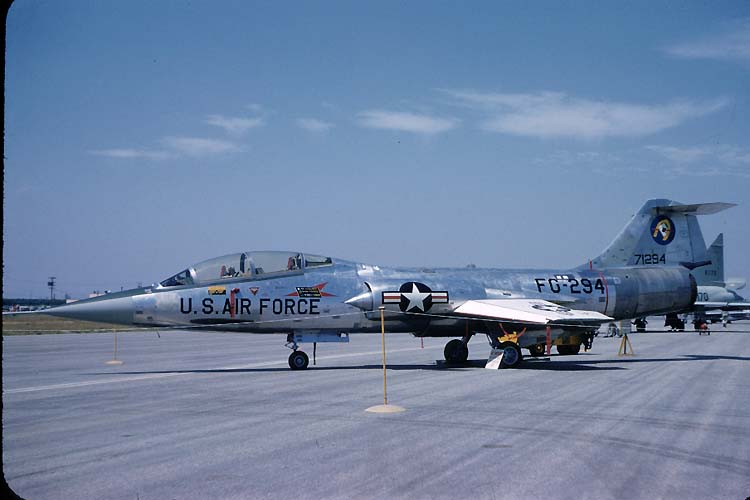 |
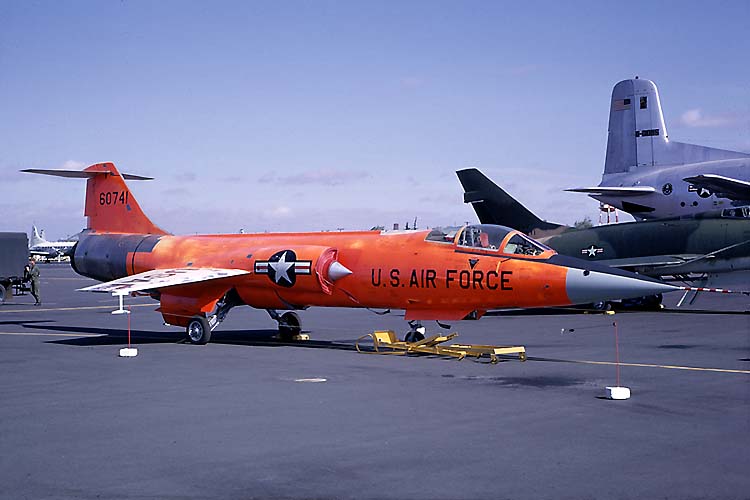 |
|
 |
|
|
|